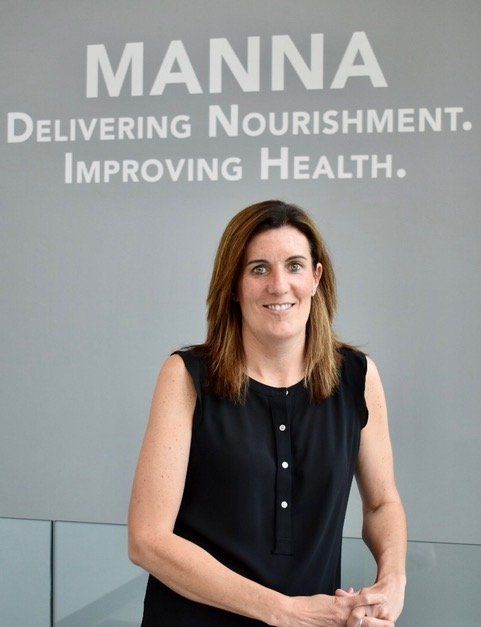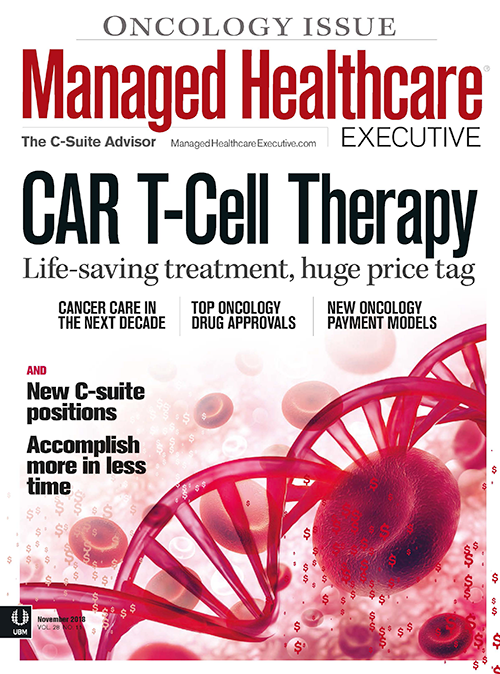Medical Foods Strive for Insurance Coverage
These products aid in treating several conditions, but are insurers paying for them? Find out.
Daughtery

The global medical foods market is expected to be worth $24.4 billion by 2025, according to Grand View Research. Despite its significant size, less is understood about these products than about nutraceuticals, which include dietary supplements, functional foods, botanicals/herbals, vitamins, and minerals.
David Doman, MD, clinical professor of medicine at George Washington University School of Medicine and a gastroenterologist in Silver Spring, Maryland, says medical foods are a gray area when trying to distinguish them from nutraceuticals, creating problems for coverage by insurers, most of whom do not include medical foods as a benefit.
Gayle Scott, PharmD, assistant professor, Virginia Commonwealth University, Medical College of Virginia and School of Pharmacy, says, “Medical foods should be used when regular food does not provide enough nutritional benefit.”
As defined in the Orphan Drug Act of 1988, minimal requirements for a product to be considered a medical food are:
- The product is a food specially formulated and processed for oral or tube feeding.
- It is used for dietary management of a medical disorder, disease, or condition with distinctive nutritional requirements.
- The product should be used under medical supervision, and is primarily obtained through hospitals, clinics, and other medical and long-term care facilities.
Examples include CerefolinNAC (L-methylfolate with B vitamins) for mild-to-moderate cognitive impairment; Limbrel (flavocoxid) for osteoporosis; Vasculera (diosmiplex) for chronic venous insufficiency; and low-protein products for phenylketonuria, an inherited disorder.
Related: Is Amazon’s PillPack Acquisition Good News for Managed Care? Experts React
Medical foods are not subject to any regulatory requirements like drugs are; may be labeled for specific conditions, unlike dietary supplements that cannot make claims to treat or prevent a disease; and follow labeling requirements dictated by the Federal Food, Drug, and Cosmetics Act. However, they must comply with applicable FDA requirements for foods and with the Current Good Manufacturing Practice regulations.
The FDA does not require a warning of adverse effects on medical foods nor information on how much of each ingredient is in a product-just the total amount-Scott adds.
Varying rules, coverage
Each state can decide how to cover medical foods, placing limits on what kinds of foods fall into the category, the conditions they address, route of administration, and eligibility. The regulations, which vary widely, most often apply to employer-sponsored insurance coverage and less to self-funded Employee Retirement Income Security Act (ERISA) plans that are generally exempt from state-mandated benefits, according to the National Coordinating Center.
A number of national bills have been proposed to provide for the coverage of medically necessary food and vitamins for digestive and inherited metabolic disorders under federal health programs and private health insurance, but none of these bills have come to fruition.
The American Medical Association supports legislation to establish a uniform requirement that health plans-both federal insurance programs and ERISA plans-offer coverage of medical foods and foods modified to be low protein for those conditions recommended by the HHS.
Dietary management: A first step
Although most insurers have put medical products on the back burner without coverage, some sponsor programs to address chronic conditions by providing and funding nutritional, specially tailored meals.
The Metropolitan Area Neighborhood Nutrition Alliance (MANNA), which targets the greater Philadelphia area, serves as a successful model providing nutritious, medically appropriate meals and nutrition counseling to people battling life-threatening illnesses.
Started in 1990 as a community effort to bring donated food from restaurants to patients homebound with HIV/AIDS, today it delivers three daily, medically tailored meals to program participants with 11 different clinical conditions. It has partnered with Medicaid HMOs run by Health Partners Plans (HPP), Aetna, Keystone First, and UnitedHealthcare and advocates for making the meals a covered benefit. Sue Daugherty, CEO of MANNA, calls the organization “a pharmacy for diets.”
“While it might be common practice for a healthcare professional to prescribe a specialized diet, there hasn’t been much thought or attention paid to where an individual would access that diet and who would pay for it,” Daugherty says, outlining one of the reasons MANNA has partnered with MCOs.
HPP promotes nutrition
In February 2015, as part of a strategy to promote nutrition at its Philadelphia-based, MCO, HPP developed a pilot program with 30 people with diabetes. It proved to be so successful that after a few months, it became an established program. Enrollees receive three medically tailored meals a day delivered weekly to their homes. Case managers support patients through regularly scheduled phone calls.
Although the meal program is not a covered benefit, HPP reimburses MANNA for meals for some of the most chronically ill Medicaid and Medicare members, hoping to reduce emergency room visits and hospitalizations, improve health, and ultimately save money, says HPP CEO and President William George.
George was attracted to the program because of a family history of diabetes and an opportunity for the plan to manage diabetes patients’ diets. HPP is a plan of choice for those with diabetes; more than 13% of the Medicare/Medicaid plan members have the condition, he says.
HPP eligibility criteria include:
- Must be in active case management for one or multiple chronic conditions and demonstrate willingness to change behavior. â¨
- Must be willing to make the appropriate dietary changes to gain control of their medical condition and be committed to work with their HPP care manager.
- Must be prepared to understand the necessity of portion control and the role it plays in health outcomes.
As of July 31, HPP has delivered 610,500 meals to more than 2,400 members. Participants enroll for a six-week cycle and may continue for an additional two cycles depending on the severity of their condition and following an assessment by a case manager.
Dependent children of members who are under 18 and spouses with a serious illness who are dependent on a member for shopping and cooking also receive meals.
The pilot studied HbA1c results six months after the program.
The program also measured medical use costs six months before the program, during, and after the conclusion for hospital readmissions, emergency room visits, and appointments with primary care physicians and specialists.
Based on May 2017 data on 194 participants, admissions dropped 27.7%, emergency room visits declined by 6.9%, primary care visits fell 15.9%, and specialist visits decreased 7.08%.
As with most new programs, the pilot is not without challenges. George says that as a government-funded plan, HPP is highly regulated, with limits on what it is allowed to do. HPP also had to train MANNA staff to create and submit claims electronically, something entirely new for MANNA.
Statewide endeavor supports food as medicine
The Food is Medicine Coalition, a California State-funded pilot under the auspices of six nonprofit agencies, including Project Angel Food and Project Open Hand, started in May 2018. Over the pilot’s three years, it anticipates enrolling 1,000 low-income patients with congestive heart failure (CHF). The pilot is modeled after MANNA.
The program, which provides low-sodium meals, will study 30-day hospital readmissions, emergency room visits, and hospital lengths of stay.
“Our goal is to reduce costs for CHF patients by keeping them out of the hospital, and deliver return on investment to the state so that a medically tailored food program could become a covered Medicaid benefit, in which foods could be written as a prescription by physicians,” says Richard Ayoub, executive director, Project Angel Food. “Other states could potentially adopt the program.”
Participants must:
- Be covered under Medi-Cal, California’s Medicaid program, for an entire year without interruption. Ayoub says this requirement presents the biggest challenge to the program.
- Be considered “frequent fliers,” i.e., have more than two but less than six hospitalizations a year.
- Not have kidney failure.
In addition, the first meal must be delivered to enrollees within seven days of hospital discharge to measure hospital use.
LA Care Health Plan is participating in California’s pilot under the umbrella of Project Angel Food, with a state directive of serving 60 Medi-Cal patients the first year.
David Kagan, MD, medical director, utilization management for the health plan, outlines the program’s goals:
- Change healthcare policy so that meals become a reimbursable expense for insurers; and
- Provide all patients discharged from the hospital with daily meals, hoping to reduce readmission rates by 50%.
He sees the $6 million program as a tradeoff between paying $2,000 per day per person for hospital care versus a year’s worth of meals.
Kagan recognizes the challenges associated with eating a proper and nutritious diet. “Most people don’t understand what are the ‘right’ foods, how to cook them, and how important they are,” he says. “They also have to get over the hump that medical foods don’t taste good. That takes education and hand holding by dieticians, who are part of our disease management programs.”
Mari Edlin, a frequent contributor to Managed Healthcare Executive, is based in Sonoma, California.

David Calabrese of OptumRx Talks New Role, Market Insulin Prices and Other Topics 'On His Mind'
April 13th 2023In this month’s episode of the "What's On Your Mind podcast," Peter Wehrwein, managing editor of MHE connects with the now Chief Clinical Officer of OptumRx Integrated Pharmacies, David Calabrese. In this conversation, David touches on his transition in January as OptumRx’s former chief pharmacy officer and market president of health plans and PBMs to his new role as Chief Clinical Officer where he now focuses more on things such as specialty pharmacy to home delivery — with an overall goal of creating whole-patient care. Throughout the conversation, Calabrese also touched on the market’s hot topic of insulin prices and behavioral health services within the OptumRx community, among other topics.
Listen
Briana Contreras, editor of Managed Healthcare Executive, spoke with Nancy Lurker, CEO and president of EyePoint Pharmaceuticals. Nancy shared a bit about EyePoint and how the organization’s innovative therapies are addressing patient needs through eye care, and most importantly, she addressed C-Suite positions like the CEO role. Nancy shared advice for those seeking to reach the CEO level, especially toward women in healthcare and other roles, and what it takes to run a biopharma company.
Listen
Florida Gets the OK. But Will Drug Importation from Canada Actually Happen?
March 5th 2024Canadian health officials warn that maintaining a drug supply for Canadians is their priority. The staunch opposition of the U.S. pharmaceutical industry may also be an obstacle to imports from north of the border.
Read More